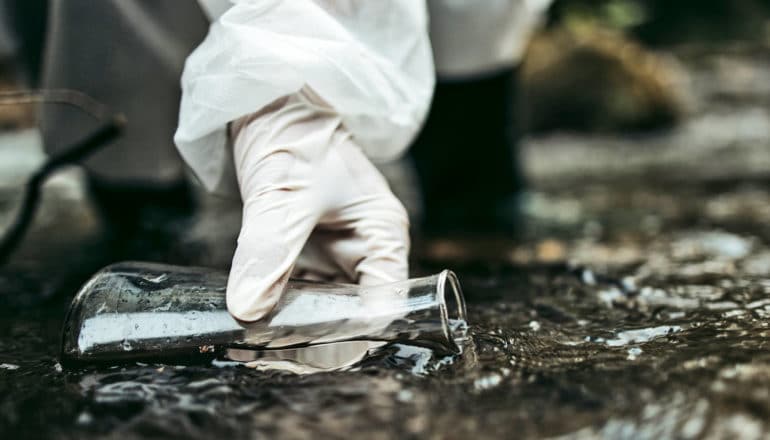
Bacteria found in brackish sediments can “eat” electricity and, in the process, absorb and lock away climate-warming carbon dioxide, research finds.
Global oceans absorb about 25% of the carbon dioxide released into the atmosphere when fossil fuels are burned. Electricity-eating bacteria known as photoferrotrophs could provide a boost to this essential process, according to the study.
This unusual skill was previously thought to be almost exclusive to freshwater bacteria, but may be common in marine bacteria.
“These microbes are fixing and sequestering carbon dioxide and they can both ‘eat’ electricity and perform photoferrotrophy,” says study leader Arpita Bose, assistant professor of biology at Washington University in St. Louis. “Photoferrotrophs use soluble iron as an electron source for photosynthesis while fixing carbon dioxide. Marine environments are great places for them because they are rich in many things they need.
“We are interested in these microbes because of their role in carbon sequestration,” she says. “Perhaps these microbes can be important for combating climate change.”
The first photoferrotrophs that scientists isolated in the 1990s came from freshwater ecosystems. Only two marine photoferrotrophs have previously been discovered, but those bacteria are difficult to keep alive in a lab setting.
“This really hampered investigations on marine photoferrotrophs,” Bose says.
For the new work, Bose returned to one of her favorite places to hunt for bacteria, Woods Hole, Massachusetts, and the Trunk River estuary. There, she and members of her team isolated 15 new strains of the common marine anoxygenic phototrophic bacteria Rhodovulum sulfidophilum.
“We found that all the Rhodovulum strains were capable of photoferrotrophy, and we used AB26 as a representative strain to show that it can also consume electricity,” Bose says.
In the laboratory, the bacteria were able to harvest electrons directly from an electricity source; in the wild, they likely harvest electrons through rust and other iron minerals that are naturally abundant in marine sediments.
The scientists then conducted some additional tests with one of the strains to further illuminate the pathway that the bacteria use to directly consume electrons. A previously unknown electron-transfer protein appears to be key to the process, although additional research is needed to specifically describe the molecular mechanism.
“Anoxygenic phototrophs, like Rhodovulum sulfidophilum, are broadly distributed in marine ecosystems,” says Dinesh Gupta, postdoctoral researcher at the University of California, Berkeley and co-first author of the new study.
“This study is the first to explore whether they can use insoluble/solid-phase substances as electron donors and if this electron-uptake process could be linked to carbon sequestration or carbon dioxide fixation in the ocean.”
Because these bacteria are common and thriving in marine sediments already, they may already hold a key for future engineered approaches to climate change, Bose says.
“We need to understand the extent of carbon sequestration they can do in nature, as it might be a cryptic metabolism,” Bose says. “We could also potentiate it further—both for biotechnology and for the environment. This study is a big step, setting the stage for many future studies.”
The study appears in the ISME Journal.
Source: Washington University in St. Louis
The post Bacteria that ‘eat’ electricity can lock away CO2 appeared first on Futurity.
from Futurity https://ift.tt/3wYMnow
No comments:
Post a Comment